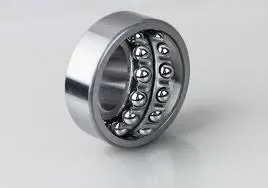
12 月 . 13, 2024 15:55 Back to list
single row thrust ball bearing
Understanding Single Row Thrust Ball Bearings A Comprehensive Overview
Single row thrust ball bearings are specialized mechanical components designed to accommodate thrust loads in one direction. This specific type of bearing consists of two rings, a ball cage, and balls. Their primary function is to support axial loads while allowing for rotation of one of the rings relative to the other. These bearings are widely used in various engineering applications, making them an essential component in machinery design.
Construction and Components
The construction of a single row thrust ball bearing is relatively straightforward yet effective in design. It typically features two grooved rings, known as the shaft and housing washers, separated by a series of balls held in a cage. The balls roll between the two washers, providing minimal friction and smooth rotation. The simplicity of this design makes it easy to manufacture and maintain, contributing to its popularity.
The key components include 1. Shaft Washer This part is mounted on the shaft and transmits the axial load. 2. Housing Washer Fixed in the housing, it receives the thrust load and maintains alignment. 3. Ball Cage The cage holds the balls in place and ensures their spacing, reducing the likelihood of wear or damage. 4. Balls These spherical components facilitate movement and load distribution.
Applications
Single row thrust ball bearings are utilized in a variety of applications across different fields. They are commonly found in - Automotive Industries These bearings support scenarios where axial loads arise, such as in clutches, gearboxes, and steering columns. - Industrial Machinery They are essential in equipment like conveyor systems, where they help in handling the thrust created by load movements. - Aerospace In aircraft systems, these bearings help manage forces during takeoff and landing. - Home Appliances Devices such as washing machines and mixers use thrust bearings to manage the axial forces generated during operation.
Advantages
single row thrust ball bearing

One of the primary benefits of single row thrust ball bearings is their ability to handle axial loads effectively. They allow for smooth rotary motion while maintaining stability under heavy loads. These bearings are also relatively easy to install and can be disassembled for maintenance or replacement. Their design minimizes friction, leading to reduced energy consumption and enhanced operational efficiency.
Moreover, thrust ball bearings have a compact form factor, making them ideal for applications where space is limited. Their ability to operate at high speeds further extends their usability across diverse sectors.
Limitations
Despite their advantages, single row thrust ball bearings are not suitable for all applications. They are primarily designed for unidirectional axial load applications, meaning they cannot accommodate radial loads effectively. This limitation means that in applications where multidirectional forces are present, alternate bearing configurations should be considered.
Additionally, these bearings can be sensitive to misalignment and require precise installation for optimal performance. Operating them outside their load and speed ratings can lead to premature failure, making sufficient load and speed analysis crucial during the design phase.
Conclusion
Single row thrust ball bearings play a pivotal role in modern engineering and manufacturing. Their unique design and functional capabilities make them ideal for applications requiring precision and reliability under axial loads. Understanding their components, applications, advantages, and limitations allows engineers and designers to effectively integrate these bearings into their systems, fostering enhanced performance and longevity in various mechanical applications. As technology advances, the development of thrust bearings continues to evolve, promising even greater efficiencies and capabilities in the future.
Latest news
-
Unlocking Efficiency with Spherical Roller Bearings
NewsOct.29,2024
-
The Ultimate Guide to Thrust Ball Bearings
NewsOct.29,2024
-
The Power of Thrust Roller Bearings: Engineered for Excellence
NewsOct.29,2024
-
The Power of Deep Groove Ball Bearings for Your Application Needs!
NewsOct.29,2024
-
The Power and Performance of Cylindrical Roller Bearings
NewsOct.29,2024
-
High-Quality Ball Bearing Manufacturing Machines
NewsOct.29,2024
